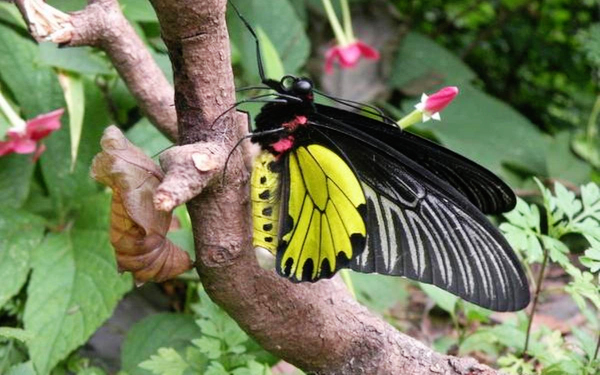Dehradun (Uttarakhand) [India], December (ANI): Sprawling across four acres, India’s first pollinators park was inaugurated on Tuesday at Haldwani in Nainital district of Uttarakhand.
The park was inaugurated by Peter Smetacek, a butterfly expert and it has around 50 different pollinator species, which include various species of butterflies, honeybees, birds and other insects.
“Objective is to conserve various pollinator species, to create awareness among the public about the importance of pollination and to promote further research on its various aspects including a threat to habitat and impact of pollution, use of pesticides or insecticides and relation between various pollinators and plant species,” said Sanjiv Chaturvedi, Chief Conservator of Forest (Research).
At present, between 75-95 per cent of all flowering plants on earth depend on pollinators to provide pollination services to over 180,000 different plant species.
In United States (US) and western countries, the importance of pollinators was recognised long back and to conserve it, pollinator parks, gardens, strips and pathways were created on large scale and campaigns were also launched and in 2015 to 2017, legislative measures were also taken in the US, the Forest Research Range, Haldwani said in a statement.
In this park, habitat has been created for various pollinators, including plantation of nectar and pollination producing plants, like marigold, rose, hibiscus, jasmine for various honeybee and butterfly, bird and moth species and also host plants to provide shelter to eggs, larvae and pupa, like curry leaf plant, citrus species, cassia species and lantana.
Apart from that, to attract various bird and butterfly species, bird feeders and nests along with many fruit trees have been placed throughout the park for various bird species.
Use of all type of chemicals, including pesticides and insecticides have been totally stopped in the park and neighbouring area, the statement informed. (ANI)
Source: ANI
You may also like
-
Trade Connect E-platform For Exports Is Single Window, Fast, Accessible And Transformational: Shri Piyush Goyal
-
Five Successful Years of Pradhan Mantri Kisan Maandhan Yojana (PM-KMY)
-
New Heat-Based Approach To Cancer Treatment Can Reduce Chemotherapy Doses
-
Global Study by Leading Experts : Swachh Bharat Mission Drives Significant Reductions in Infant Mortality Rates in India
-
Scientists Take A Major Step Towards Unification Of Classical & Quantum Gravity
